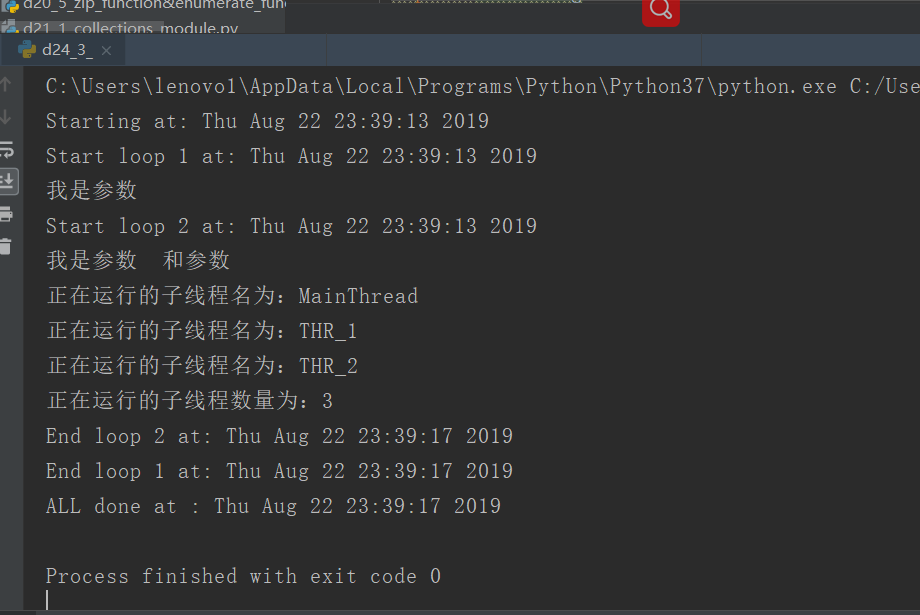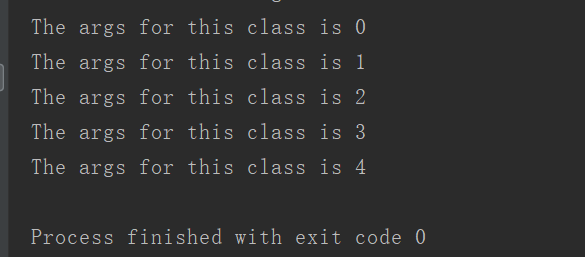一、线程常用属性
1.threading.currentThread:返回当前线程变量
2.threading.enumerate:返回一个包含正在运行的线程的list,正在运行的线程指的是线程启动后,结束前的状态
3.threading.activeCount:返回正在运行的线程数量,效果跟len(threading.enumer)一样
4.thr.setName:给线程设置名字
5.thr.getName:得到线程的名字。
举例:
i
mport _thread as thread import time def loop1(in1): print("Start loop 1 at:",time.ctime()) print("我是参数",in1) time.sleep(4) print("End loop 1 at:",time.ctime()) def loop2(in1,in2): print("Start loop 2 at:",time.ctime()) print("我是参数",in1,"和参数 ",in2) time.sleep(4) print("End loop 2 at:",time.ctime()) import threading def main1(): print("Starting at:",time.ctime()) t1 = threading.Thread(target=loop1,args=('',)) t1.setName("THR_1")#给线程重命名 t1.start() t2 = threading.Thread(target=loop2,args=('','')) t2.setName("THR_2") t2.setDaemon(True) #主线程运行完了就完了,不用等线程2 t2.start() time.sleep(3)#三秒后两个子线程仍然在运行着,因为他们里面有一个四秒在停着 for thr in threading.enumerate():#返回的是正在运行的子线程的列表 print("正在运行的子线程名为:{0}".format(thr.getName()))#读取了该线程的名字 print("正在运行的子线程数量为:{0}".format(threading.activeCount()))#打印出了线程的数量,包括主线程和两个子线程一共3个线程 t1.join()#等线程1运行完了再接着向下运行 print("ALL done at :",time.ctime()) if __name__ == "__main__": main1()

二、直接继承子类threading.Thread
1.直接继承Thread;重写run函数
2.例子:
class MyThread(threading.Thread):#定义一个Thread的子类 def __init__(self,args):#重写__init__函数,其中参数为self和新引入的参数 super(MyThread,self).__init__()#固定格式,继承父类的__init__函数 self.args = args def run(self): time.sleep(1) print("The args for this class is {0}".format(self.args)) for i in range(5): t = MyThread(i) t.start() t.join()

三、源码
d24_3_other_multi_thread_attribute.py
https://github.com/ruigege66/Python_learning/blob/master/d24_3_other_multi_thread_attribute.py
2.CSDN:https://blog.csdn.net/weixin_44630050(心悦君兮君不知-睿)
3.博客园:https://www.cnblogs.com/ruigege0000/
4.欢迎关注微信公众号:傅里叶变换,后台回复”礼包“,获取大数据学习资料
